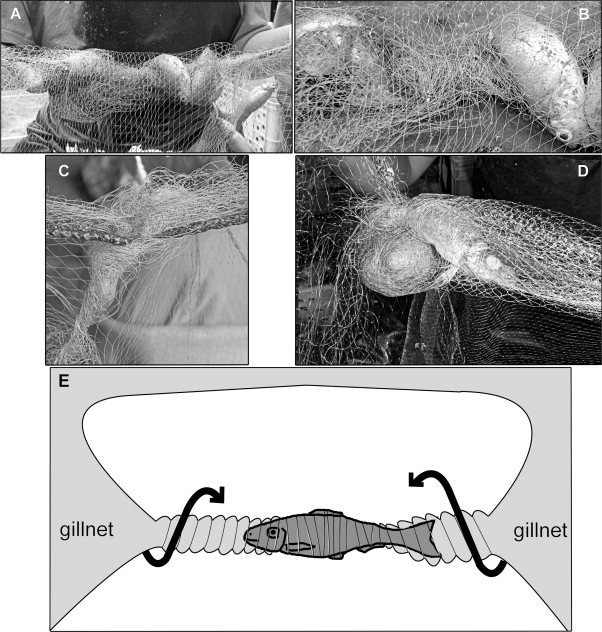 Because of its complex life cycle, cryptic behavior, body shape, ability to excrete mucus and excellent maneuvering, the European eel (Anguilla anguilla) is difficult to monitor. During many years of gillnetting in Dutch and Czech freshwaters, we registered characteristic involutions of gillnet netting with a partially eaten fish inside. We concluded that these involutions were the result of eels attacking fish caught in gillnets and called the occurrences eel attacks. When we compared the abundance of eel attacks in gillnets with the abundances of eels recorded using active gears (beach seining and trawling), we found a positive and significant correlation (partial Spearman R = 0.640) that can be used for rough eel-abundance assessment. The most frequently attacked fishes were young individuals of abundant species (Perca fluviatilis, Sander lucioperca, Rutilus rutilus and Osmerus eperlanus) and small species (Gymnocephalus cernua) up to 100 mm standard length. The eels preferred pikeperch and avoided roach and smelt. The reason for prey species preferences was most likely prey species distribution rather than size selectivity. The eels attacked fishes in gillnets during the night, most likely after midnight. The eel attacks were not distributed homogenously among the studied reservoirs, geographical areas and years. The frequency of eel attacks was higher in benthic than in pelagic habitats. Eel attacks were more frequent in Dutch than in Czech reservoirs, corresponding to a general decline of eel densities with increasing distance from the sea. The number of eel attacks also declined significantly from 1998 to 2008. The present study showed that eel attacks can be successfully used as a new, simple and nonintrusive tool for monitoring eel abundance using gillnets. Gillnets are widely used in fish monitoring, and hence, gillnet sampling performed throughout Europe has a great potential for eel-abundance assessment.
Because of its complex life cycle, cryptic behavior, body shape, ability to excrete mucus and excellent maneuvering, the European eel (Anguilla anguilla) is difficult to monitor. During many years of gillnetting in Dutch and Czech freshwaters, we registered characteristic involutions of gillnet netting with a partially eaten fish inside. We concluded that these involutions were the result of eels attacking fish caught in gillnets and called the occurrences eel attacks. When we compared the abundance of eel attacks in gillnets with the abundances of eels recorded using active gears (beach seining and trawling), we found a positive and significant correlation (partial Spearman R = 0.640) that can be used for rough eel-abundance assessment. The most frequently attacked fishes were young individuals of abundant species (Perca fluviatilis, Sander lucioperca, Rutilus rutilus and Osmerus eperlanus) and small species (Gymnocephalus cernua) up to 100 mm standard length. The eels preferred pikeperch and avoided roach and smelt. The reason for prey species preferences was most likely prey species distribution rather than size selectivity. The eels attacked fishes in gillnets during the night, most likely after midnight. The eel attacks were not distributed homogenously among the studied reservoirs, geographical areas and years. The frequency of eel attacks was higher in benthic than in pelagic habitats. Eel attacks were more frequent in Dutch than in Czech reservoirs, corresponding to a general decline of eel densities with increasing distance from the sea. The number of eel attacks also declined significantly from 1998 to 2008. The present study showed that eel attacks can be successfully used as a new, simple and nonintrusive tool for monitoring eel abundance using gillnets. Gillnets are widely used in fish monitoring, and hence, gillnet sampling performed throughout Europe has a great potential for eel-abundance assessment.
Keywords: Anguilla anguilla; beach seine; eel; feeding strategy; fish-monitoring technique; spatial distribution; species selectivity; trawl
